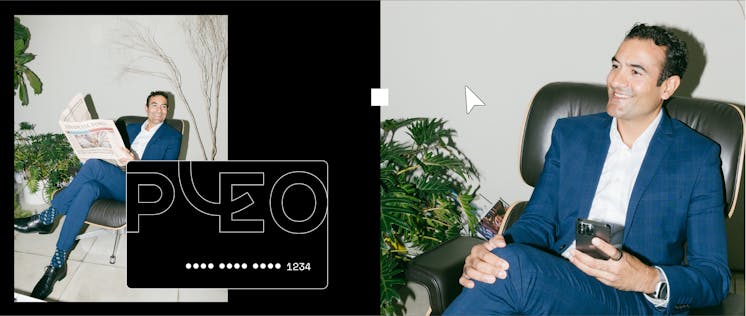
Small business expense management: What you need to know for 2024
Frustration (noun): the feeling of being incredibly annoyed, typically at the inability to achieve something.
Synonym: business expenses (without the proper processes in place, of course).
A necessary factor to run any business, expense management can be an incredibly frustrating process for both finance teams and those spending. Those within the finance function often struggle with chasing receipts, categorising transactions and analysing business spending, while colleagues in other departments endure months waiting for their expense reimbursements.
Fortunately, there are ways to better manage your business expenses that lead to fewer frustrations in the workplace. And might end up saving some precious cash too.
Let’s take a look.
Content overview
What is expense management?
Expense management is the way that a business carries out, tracks and audits the spending that is needed to make a business tick. This covers everything from travel expenses to software subscriptions and is an essential part of every company – no matter its size.
Every company has its own bespoke methods for tracking expenses, tailored to the way the particular business operates. Since no two companies’ spending needs will be identical, neither will their expense management process.
Expense management can be tricky, especially when relying on older (more analogue) methods of bookkeeping. Historically, expense management has been a patchwork of different, often inefficient, methods of logging spending. This typically includes trailing through the business bank account with a combination of spreadsheets, scanned receipts and paper invoices, which is no fun for anyone involved.
The more employees you have – and the more geographically spread out they are – the more operationally difficult this expense claim process becomes, leading to a long and time-consuming paper trail with small mistakes cascading into much bigger issues.
So why is small business expense management necessary?
There are a few different reasons why your business should place good expense management at the top of the priority list.
Cost reduction
The average cost of processing a single report comes in at around £37.96.
While this number doesn’t sound too big, it doesn’t really end there. It has long been known that one in five (19%) of all expense reports contain errors or missing information, costing an additional £40 and 18 minutes to correct. By this logic, the cost of human error, even for a small company, is staggeringly high.
Compliance
The actual processing and maintenance of receipts and spreadsheets is a huge administrative task, especially if you’re managing income and expenses across a number of offices or countries. With expense reporting playing a big role in tax and accounting, it’s not something that you can afford to get wrong either.
The resources required to keep on top of the paperwork and ensure that every claim is legitimate (and that employees are reimbursed in a timely manner) can often cost far more for a small business than the return you’ll get on the expense being made in the first place.
Employee satisfaction
Employee satisfaction is one of the major issues with a manual system.
Most employees paying for travel expenses will be using their own accounts. For larger travel payments, even having to wait a week to be reimbursed could put them deeply out of pocket. If your expense system leaves your people waiting to be repaid, satisfaction levels will inevitably take a hit.
Eventually, this could mean that productivity and trust in the company go down.
Nobody wants to work somewhere that jeopardises their own financial security, and over time, employees may become more hesitant to take on company expenses, which is ultimately limiting for the overall company growth.
Disputes that hold up payments only further exacerbate these feelings of frustration. If managers feel that their employees are taking advantage of the system, whether they are right or not, tensions are more likely to build.
Feast and famine finance
Manual processes make it much more difficult to keep a real-time overview of company money. Since companies usually wait for employees to submit their claims, there’s often a delay in data for how company money is being spent.
Without enough working capital or insight into company cash flow, life for those in the finance team can be difficult. The everyday monitoring of the company’s margins and ROI can be wildly inaccurate. Add this to errors in employee claims and the figures get more muddied and complex. Yikes.

Types of company expense management
Travel and expense management
Travel management software relates to those pesky T&E expenses that often get lost while employees take trips or attend conferences on behalf of the company.
Specifically, travel and expense softwares help companies set the guidelines around spending while their staff is away on business. Without a direct line to the finance team for the approval of every single expense, this type of automation helps regulate spending while empowering employees with their own cards and accounts.
Technology expense management
If your business is looking to scale up, putting systems and software in place can be one of the biggest aids in keeping the quality associated with your business. But sometimes, small businesses can find that all these subscriptions get a little out of control.
Like travel management software, your tech stack can be tracked, categorised and analysed so that you can measure its genuine impact and effectiveness. By keeping a closer eye on subscription outgoings, especially in the oncoming rollercoaster of 2024, your business can grow more strategically.
Marketing and advertising
Each year or quarter, most companies will allocate a certain budget towards advertising in order to increase sales. But without clear spend controls put in place, this budget could easily get out of hand. By referring to marketing expense management, your team can optimise efficiency and strengthen their reach, capturing those precious leads.
Equipment, utilities and hardware
Finally, the day-to-day running of the business includes the likes of non-operational expenses, such as office equipment and energy. While these costs are unavoidable, they should still be trackable. For a small business, knowing just how much of an impact these expenses have on your overall revenue can be the difference between healthy profits and severe losses.
Company expense management in this category is just as vital as travel and expense software, and it’s not just because everyone needs to have their cup of coffee each morning.
What is the expense management process?
The best expense management process flow for your business would be whatever is most suitable to the company's needs at every access point.
And this begins with your employees.
The most straightforward process is always going to win big with your staff. Requiring them to fill out details such as VAT, reasons for claiming and exact amounts being charged from each receipt makes the process a deep drain on their time.
An automated system gives you the best chance of empowering your staff, simplifying your process, eliminating inefficiencies, and keeping everyone in your company happy.
Expense tracking
The first step toward managing your expenses is tracking them. This is typically done either manually or automatically (psst! Automated reporting will speed up the process!)
Manual
Manual expense reporting is the way business expense tracking has traditionally been done and refers to expense management techniques that are mostly processed by hand through repetitive work. This includes using outdated or low-level software that does little more than move things from paper to screen (think spreadsheets, paper forms and even Excel).
Automated
Automated expense reporting, on the other hand, is when the routine and menial aspects of expense management are processed automatically through a web or phone app. This increases the efficiency of expense management greatly, freeing up accountants’ time to work on more productive and critical roles. Expense management automation also reduces the risk of error and fraud as there is less opportunity for data to be affected by someone.
While most companies nowadays are already seeing massive benefits from expense automation, there are many businesses that are yet to make the transition.
Benefits of using online expense management software
There’s a reason that automated expense management systems are quickly becoming the norm. They provide businesses with a plethora of benefits while streamlining a process that all companies partake in. Listed below are just a few of the benefits of switching to an online expense management system.
Save time and money
The most obvious benefit is how much time and money you’ll save by automating your business’s expenses.
Financial tasks – more than just about any other kind of work – are largely automatable by the right tech solution. This means that the tedious, time-consuming work that would typically be done by hand could be done automatically in a fraction of the time.
Automation saves time and money in two major ways.
First, it reduces the amount of time your employees spend doing repetitive, simple tasks – like data entry, transfers, and tracking. Rather than paying employees to do work that could easily be done by a computer, you can pay them to perform a more meaningful and critical role in your expense management. For example, figuring out how to retain more revenue and use working capital more efficiently to grow the business.
Secondly, automation vastly reduces the risk of errors occurring. Human beings are naturally prone to making mistakes, which can add up fast.
In fact, accidentally duplicated paperwork is costing businesses approximately $3 trillion per year in the US. These kinds of errors are completely avoidable through automated processes, which have a significantly lower error rate than their human counterparts.
Increase financial security
Another benefit of letting software streamline your company’s numbers is security.
While the majority of employees are perfectly responsible, there are those that attempt to work the system – namely through fraud. In fact, in the first half of 2020 alone, expense fraud losses in the UK hit £374.3 million.
Automated systems not only prevent fraud and other security risks by handling portions of the work outside of human influence, but also by utilising fraud detection services.
These kinds of features can detect fraud before and as it’s happening, preventing it from having the costly effects it would have in the past.
Expense from anywhere
Thanks to modern technology, we’re living in an increasingly mobile age, where “the office” can be just about anywhere. With the remains of the pandemic finally becoming a relic of the past, 2024 is also showing more spread out workforces with plenty of travel, remote work and many returning to the office.
Technology advances allow employees greater flexibility within their roles, letting workers accomplish tasks while on the road, away from work, or from multiple devices. In order to get the most out of the possibilities of modern technology, look for cloud-first software solutions to help with travel and expense management.
This kind of innovation in expense management helps keep your team agile and able to incur essential business expenses wherever they might be, without having to then send paper receipts across borders via snail mail.
Make smarter decisions
If modern technology has taught us anything, it’s that data is king.
The more data you have, the better you’ll understand your business and the better you’ll be able to make decisions on its behalf. Automated expense management softwares can not only track and manage your company’s expenses but also learn from them and distil that information back into your business budgeting.
The advanced data analytics integrated into most automated solutions can provide you with resources that your company has never had before. You can instantly look at how much your company is spending, what it’s spending it on, what sort of trends your business tends to fall into and even look at predictions of what your expenses will look like in the future.
Making smarter, more forward-thinking decisions relies on good facts and statistics. So help your business by using modern technology to inform the strategy.
Features of an automated expense management system
A good expense management system doesn’t mean there’s a big learning curve for your team; it should be easy to pick up and understand from the get-go. We’d expect to see the following features:
- Expense reports
- Expense categories
- Approval workflows
Expense reports
Expense reports exist to help centralise and explain all of your company spending. With automation, this can be inherently applied to mileage and cash withdrawals, enabling your finance team with insightful information in real-time.
To get ahead with your expense reports, try out our Guide to Modern Expense Reporting.
Expense categories
Applying labels to every single transaction can be time-consuming, but it’s necessary nonetheless. With an automated expense software like Pleo, there are nine eligible expenses categories. As soon as your transaction goes through, a category is automatically assigned to the purchase based on the information available, such as travel or entertainment, thanks to innovative AI gathering data from the point of purchase.
Approval workflows
No matter what, an expense technology exists to aid your company in spending responsibly. This is why an automated expense software should give your finance team that extra bit of control to set the tone for spending inside your business.
For example, Pleo offers an approval workflow that enables team members to hold review capabilities, and automatically flags expenses that cross your pre-determined boundaries.
How to choose expense management software for small businesses
When deciding which expense solution to go for, it’s really crucial to consider things from your team’s perspective. From the staff members spending the money, to those accounting for it: it’s absolutely essential that you consider how easy (or not) the solution you pick will make their lives.
Pick something overburdened, and they quite simply won’t use it properly. Choose a solution that’s perfectly suited to their needs, however, and you could be on your way to huge savings for your business.
How big is your business?
The first thing you’ll need to consider when deciding on an expense system is the size of your business. As a small business, manual expense data handling may seem like the most straightforward option.
However, small business owners also have to consider factors such as how often expenses are reimbursed, and not just think about how many employees are travelling.
As more expenses move from traditional invoices to cards and subscriptions, consider everything that may need to be purchased for work, from software to supplies (and chasing all those receipts).
In fact, it’s perhaps especially important to choose a streamlined solution for a small business with limited resources.
Equip your team with a T&E automation solution, and you suddenly free up hundreds of hours to do work that actually benefits your company.
Time to upgrade
If you’ve been considering switching to an automated expense management system, then data shows that you’re on course to relieve a lot of unnecessary overhead and time commitment surrounding your expense reporting.
With a T&E expense automation solution, this becomes not just achievable, but affordable. Your company can also improve the ways by which company money is spent.
By equipping your team with Pleo Reimbursement, an online expense management system, you can:
- Empower your team with in-pocket spending solutions, whilst maintaining full control over spending limits. They’re not out of pocket, and you know exactly what you’ve authorised.
- Gain back countless hours of lost time by no longer having to manually process individual expenses.
- See where company money is going in real-time, whilst integrating seamlessly with your accounting system.
And so, whilst a manual expenses system could feel like the easiest, most cost-effective way to manage your expenses, is it really right for your company?
The outlay for an automated system may initially be hard to justify, but finding one that works for your business could really help reduce costs, save the company thousands of pounds each year and keep employees satisfied.
If you’re ready to make the jump, book a demo with Pleo today.

Smarter spending for your business
Save time on tedious admin and make smarter business decisions for the future. Join Pleo today.
Powered in the UK by B4B partnership

Senior Content Manager
Content, demand gen and SEO professional. 5 years in the CPH start-up scene. Get in touch!
You might enjoy...

Mastering spend management: Easily manage recurring payments with Pleo’s Vendor cards
Your guide to understanding how Vendor cards can work for your business, saving you time and money when managing the digital services you re...

Why Pleo? How to convince your boss to give us a try
Want to leave behind the stress of monthly expenses? The first step is persuading your boss why Pleo is the answer.
.jpg?ixlib=gatsbyFP&auto=compress%2Cformat&fit=max&dpr=2&w=373)
Mastering spend management: Have complete visibility over your expenses with Pleo
Keeping track of expenses can be a challenge when dealing with piles of receipts. Automating the manual tasks with Pleo can make life easier...
Get the Pleo Digest
Monthly insights, inspiration and best practices for forward-thinking teams who want to make smarter spending decisions
Powered in the UK by B4B partnership